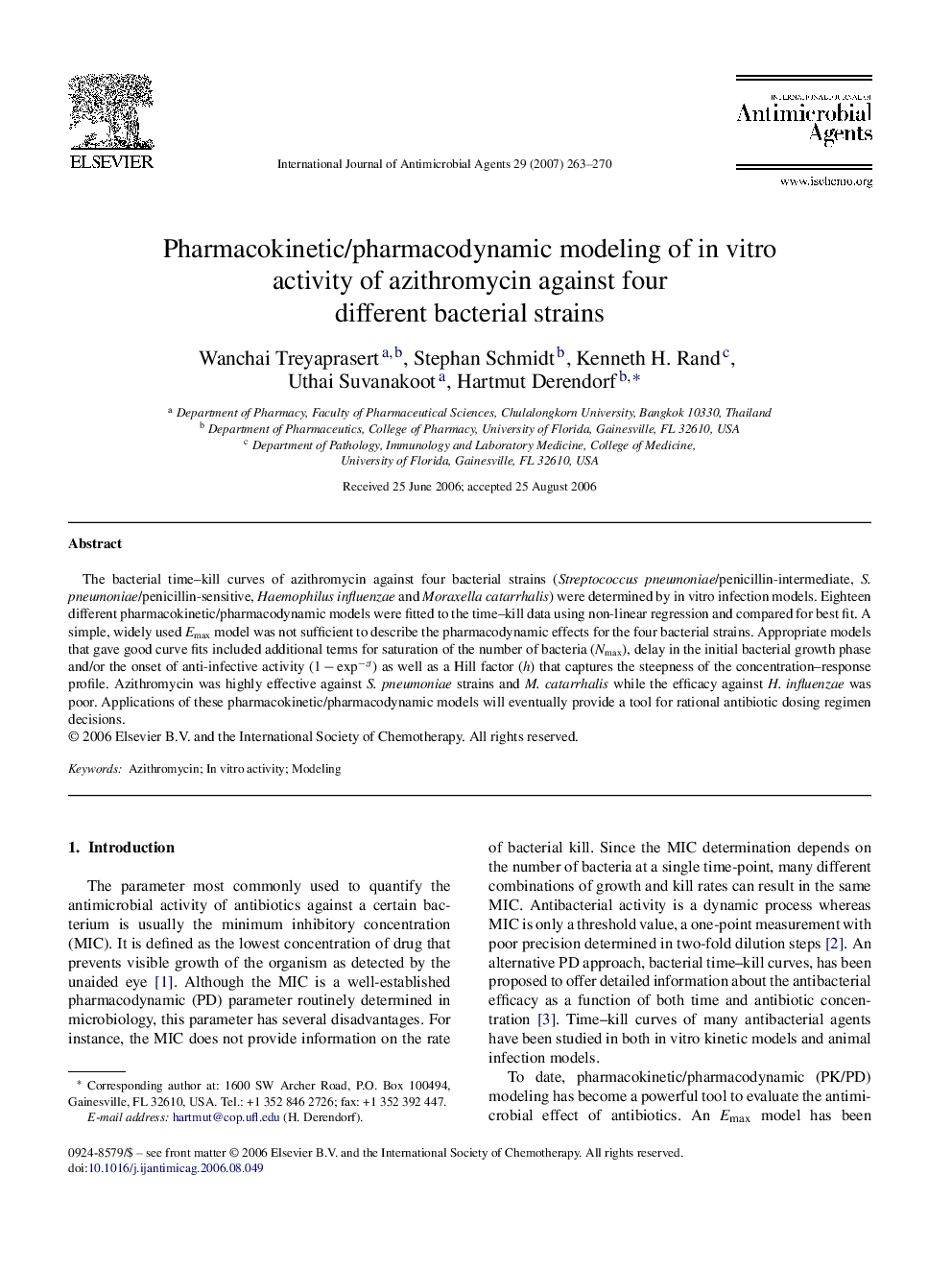| Article ID | Journal | Published Year | Pages | File Type |
|---|---|---|---|---|
| 3361303 | International Journal of Antimicrobial Agents | 2007 | 8 Pages |
The bacterial time–kill curves of azithromycin against four bacterial strains (Streptococcus pneumoniae/penicillin-intermediate, S. pneumoniae/penicillin-sensitive, Haemophilus influenzae and Moraxella catarrhalis) were determined by in vitro infection models. Eighteen different pharmacokinetic/pharmacodynamic models were fitted to the time–kill data using non-linear regression and compared for best fit. A simple, widely used Emax model was not sufficient to describe the pharmacodynamic effects for the four bacterial strains. Appropriate models that gave good curve fits included additional terms for saturation of the number of bacteria (Nmax), delay in the initial bacterial growth phase and/or the onset of anti-infective activity (1 − exp−zt) as well as a Hill factor (h) that captures the steepness of the concentration–response profile. Azithromycin was highly effective against S. pneumoniae strains and M. catarrhalis while the efficacy against H. influenzae was poor. Applications of these pharmacokinetic/pharmacodynamic models will eventually provide a tool for rational antibiotic dosing regimen decisions.
